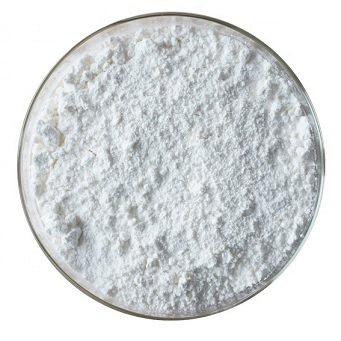Tylosin Chemische Eigenschaften,Einsatz,Produktion Methoden
R-Sätze Betriebsanweisung:
R42/43:Sensibilisierung durch Einatmen und Hautkontakt möglich.
S-Sätze Betriebsanweisung:
S36:DE: Bei der Arbeit geeignete Schutzkleidung tragen.
Beschreibung
Tylosin is a macrolide antibiotic produced by
S. fradiae that has bacteriostatic activity against Gram-positive bacteria. It is a mixture of tylosin A, B, C, and D, with tylosin A contributing 80% of its bacteriostatic activity. Tylosin has MIC values of 9.6, 16.4, 0.1, 1, and 0.5 μg/ml for
F. necrophorum, A. pyogenes, M. gallisepticum, S. aureus, and
S. uberis, respectively.,, Formulations containing tylosin have been used for the prevention of liver abscesses in cattle. Tylosin is an environmental contaminant because it is not fully metabolized by treated livestock and enters the environment through manure-based fertilizers.
Chemische Eigenschaften
Off-White to Pale Yellow Solid.
Tylosin is a macrolide antibiotic which is active against certain Gram-positive and Gram-negative bacteria and Gram-positive mycoplasmas. It consists predominantly of tylosin(factor A), but varying amounts of desmycosin (factor B), macrocin (factor C) and relomycin(factor D) may also be present, depending on the manufacturing source. Most of themicrobiological activity resides with tylosin factor A.

Tylosin is a weak organic base with a high degree of lipid solubility, thus it is well distributed to the organs and tissues of animals (Burrows, 1980).
Tylosin is used in pigs, cattle and poultryfor the treatment of conditions caused by sensitive organisms. It may be administered by oral orparenteral routes. Tylosin is not used in human medicine.
Verwenden
Tylosin is a 16-membered macrocyclic lactone isolated from Streptomyces fradiae in 1961. Tylosin has broad spectrum antibacterial activity and was developed as a veterinary pharmaceutical for treatment of bacterial infections in a range of domestic animals . Tylosin acts by binding to the 50S ribosomal subunit resulting in the inhibition of protein synthesis in bacteria.
Definition
ChEBI: A macrolide antibiotic that is tylonolide having mono- and diglycosyl moieties attached to two of its hydroxy groups. It is found naturally as a fermentation product of Streptomyces fradiae.
Indications
In cattle, tylosin is used for treatment of BRD caused by Mannheimia, Pasteurella multocida, and Histophilus somni (formerly Haemophilus somnus). It is used for interdigital necrobacillosis (foot rot) in cattle caused by Fusobacterium necrophorum or Bacteroides melaninogenicus. In pigs, it is used for treatment of swine arthritis caused by Mycoplasma hyosynoviae, swine pneumonia caused by Pasteurella spp., swine erysipelas caused by Erysipelothrix rhusiopathiae, swine dysentery associated with Serpulina (Treponema) hyodysenteriae, and proliferative enteropathy caused by L. intracellularis. For treatment in pigs, it is also added to feed (Type A–medicated feed article) or drinking water. In small animals, it is used for gram-positive soft tissue and skin infections. However, the most common use in dogs is for treatment of diarrhea, referred to as antibiotic-responsive diarrhea, that has not responded to other treatments. The etiology of the diarrhea is not known but may be caused by Clostridium or Camphylobacter. For this use, the powdered formulation (swine formulation) is most often added to food daily for maintenance.
Kontakt-Allergie
Tylosin is a macrolid antibiotic used in veterinary
medicine. Occupational exposure concerns farmers,
breeders, animal feed workers, and veterinarians.
Mechanism of action
Tylosin is a 16-membered macrolide approved for therapy of a variety of infections in pigs, cattle, dogs, and poultry (see indications below). It is formulated as tylosin tartrate or tylosin phosphate. Like other macrolide antibiotics, tylosin inhibits bacteria by binding to the 50S ribosome and inhibiting protein synthesis. Spectrum of activity is limited primarily to gram-positive aerobic bacteria. Clostridium and Campylobacter are usually sensitive. The spectrum also includes the bacteria that cause BRD. Escherichia coli and Salmonella are resistant. In pigs, Lawsonia intracellularis is sensitive.
Nebenwirkungen
Tylosin may cause diarrhea in some animals. However, oral treatment for colitis in dogs has been administered for several months with safety. Skin reactions have been observed in pigs. Oral administration to horses has been fatal.
Sicherheitsprofil
Poison by intravenous
route. Moderately toxic by ingestion and
intraperitoneal routes. When heated to
decomposition it emits toxic fumes of NOx.
See also TnOSIN HYDROCHLORIDE.
Tylosin Upstream-Materialien And Downstream Produkte
Upstream-Materialien
Downstream Produkte

